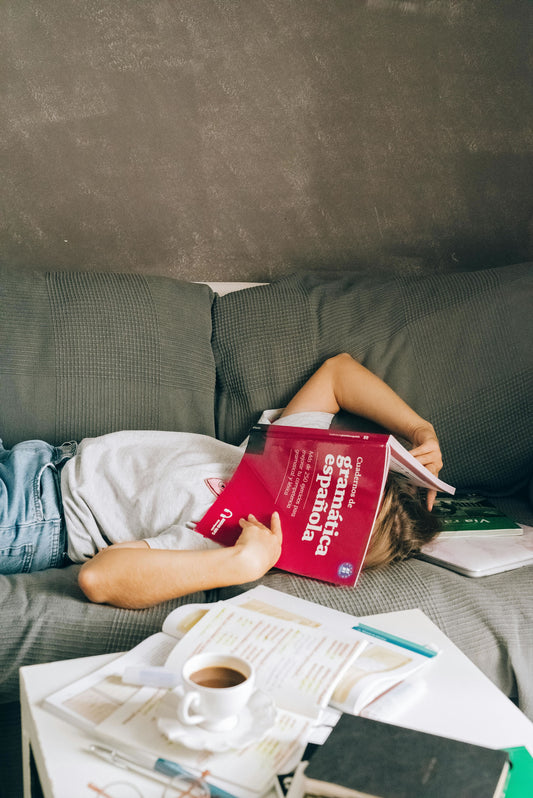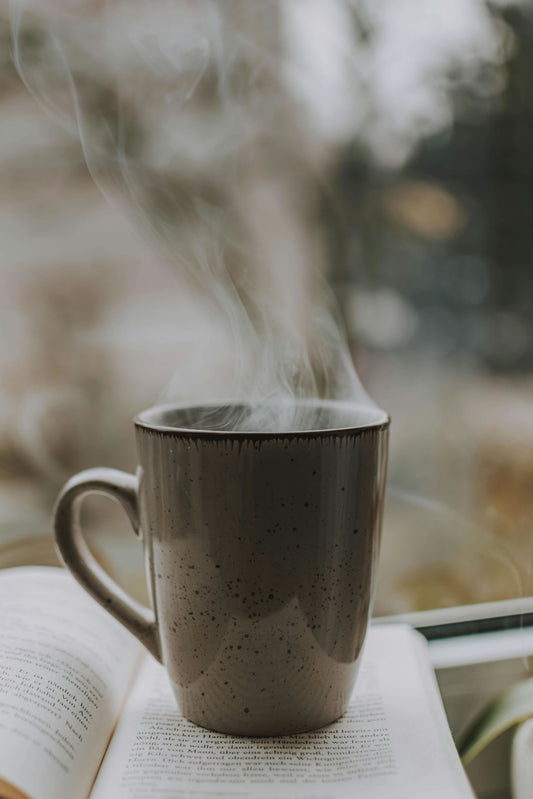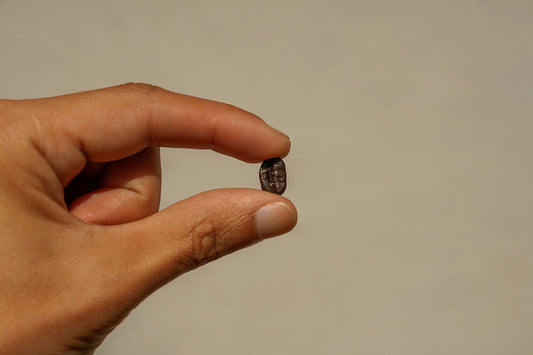For coffee enthusiasts, the question of "how many ounces in a cup of coffee" is very important, as it directly influences the brewing process and the strength of their beloved beverage. In the process of coffee making, precision is key, and understanding the exact measurement in ounces ensures the ideal balance of flavors.
This question resonates deeply with the community of coffee aficionados who take pride in crafting the perfect cup. Moreover, in the context of the beauty and wellness community, the significance lies in the potential health impacts of coffee consumption.
The precise measurement not only affects the taste but also contributes to the control of caffeine intake, an aspect often considered by those mindful of their wellness.
So, in the pursuit of a flawless coffee experience, the question of "how many ounces in a cup of coffee" becomes a crucial consideration for both coffee lovers and those prioritizing their well-being.
/ IN THIS ARTICLE
01. Understanding Coffee Measurements
02. Global Variations in Coffee Serving Sizes
03. The Significance of Accurate Measurements
04. Coffee Measurements and Health
05. Standard Coffee Serving Sizes
07. Coffee Recipes and Measurements
08. The Role of Measurement in Coffee Quality
09. Barista Tips for Perfect Coffee Measurements
10. Customizing Coffee Strength
11. Coffee, Beauty, and Wellness
12. Advanced Techniques in Measuring Coffee
13. Frequently Asked Questions
14. Conclusion
Understanding Coffee Measurements
Though ratios are completely subjective, nearly all well-balanced cups of coffee are consistently brewed around a certain ratio.
Since espresso is usually diluted with water or milk, the proportions used to make it are 1:2 (1 gram of coffee to 2 grams of water).
To help you quickly determine how much coffee to ground, we have included the following formulas.
- Water is the first. To determine the amount of coffee needed to brew a certain volume, such as one serving for your preferred restaurant cup, divide the quantity by the desired strength. Ten ounces, or 283 grams, of water will fit in a regular diner cup. To find out how much coffee you'll need to ground, divide that quantity by your preferred ratio, such as 17: 16.05. That's 283 divided by 17. Therefore, 16.5 grams of coffee, ground to a fine powder, will be required.
- Gather your coffee beans. To get the amount of water required, multiply the quantity of coffee you have by your ratio. Therefore, for a robust brew, multiply 30 grams of coffee by 15 milligrams. 30 grams times 15 grams equals 450 grams of water.
Global Variations in Coffee Serving Sizes
Coffee cup sizes vary significantly across cultures, reflecting diverse preferences and traditions. In Western cultures, particularly in the United States, larger cup sizes prevail, with options like the "grande" and "venti" in popular coffee chains.
These sizes cater to the on-the-go lifestyle and the desire for more caffeine. In contrast, European cultures often embrace smaller, concentrated servings like the Italian espresso, highlighting a focus on savoring the rich flavors.
Asian cultures, such as in Japan, may feature modest cup sizes, emphasizing precision and craftsmanship in brewing.
Now, delving into Filipino coffee culture, the Philippines brings its own unique twist to coffee serving sizes. Filipinos often enjoy their coffee in smaller cups, reflecting the importance placed on socializing and taking the time to connect with others.
The local "kapeng barako" is a strong and aromatic coffee variety, typically served in smaller cups. This practice aligns with the Filipino tradition of "kapwa," emphasizing communal relationships and shared moments over a leisurely cup of coffee.
These global variations in coffee cup sizes not only showcase cultural nuances but also highlight the diverse ways in which people around the world experience and appreciate their daily dose of caffeine.
The Significance of Accurate Measurements
Numerous transformations take place in coffee as it undergoes roasting. A change that occurs is a reduction in the moisture content of the coffee beans.
Green coffee typically has a moisture level of around 11% before roasting. The moisture content often drops to 3 to 5% as a result of the significant reduction that occurs during roasting. As a result, the beans are flawless and prepared for brewing. This has an effect on the mass.
Having the knowledge of how much coffee to measure is more important than just purchasing high-quality beans.
Excessive coffee use can result in subpar brewed coffee, as we mentioned before. A bitter coffee devoid of sugar will be the end product. Now that you know why precise coffee measurements are so important, let's get down to brass tacks: how to measure coffee beans for brewing.
Coffee Measurements and Health
The intricate relationship between coffee consumption, caffeine intake, and overall health has been a subject of extensive research. While moderate coffee consumption has been associated with various health benefits, excessive intake of caffeine may lead to adverse effects.
Studies suggest that a moderate amount of coffee, typically around 3-4 cups per day, is linked to a reduced risk of certain diseases such as Parkinson's, Alzheimer's, and type 2 diabetes.
The antioxidants present in coffee are believed to contribute to these positive effects. However, it is crucial to note that individual responses to caffeine can vary, and excessive intake may lead to issues like insomnia, anxiety, or increased heart rate.
In this context, Juju Blends products stand out as they offer a unique approach to coffee enjoyment. Juju Blends combines the rich flavors of high-quality coffee beans with functional ingredients, creating a blend that not only delights the taste buds but also provides added health benefits.
Their products are carefully crafted to offer a balanced caffeine content, ensuring that consumers can enjoy the positive aspects of coffee without the drawbacks associated with excessive caffeine intake.
With a focus on quality and well-being, Juju Blends strives to enhance the coffee experience while promoting a harmonious relationship between coffee, caffeine, and overall health. As we celebrate one year of existence, Juju Blends continues to be a compelling choice for those seeking a flavorful and health-conscious coffee option.
Standard Coffee Serving Sizes
The typical cup size ranges from 30 milliliters to 295 milliliters, which is ideal for drip coffee.
Cups, on the other hand, can hold 15 ounces or more of caffeine for individuals who require a substantial amount. It has been mentioned that each type of coffee has its own specific cup size. The size of the cup may vary from the usual to accommodate different types of coffee.
The next sections will go over the typical dimensions of a coffee cup for the most common varieties of coffee. Starting with the tiniest, the list continues with a review of the largest models.
Espresso
Espresso cups range in size from 60 milliliters to 88 milliliters, with larger and smaller versions available. These cups, which are also called demitasses, are made to bring out the best flavor of espresso. They have a broad top and a narrow bottom, so the scents are more concentrated and easier to inhale.
Cappuccino
These typically range in size from 147 to 177 milliliters, making them twice as large as an espresso cup. The base might be narrow even if the rim is large. Cups and mugs designed for cappuccio typically have a saucer plate.
Latte
With a capacity of 443 milliliters, a latte cup resembles more of a bowl than a traditional cup. All the toppings that make a latte unique can be placed in this cup. With its wide profile, you can easily ladle steam milk and make beautiful latte art.
Oversized Cups
Both oversized classic and enormous latte are possible types of oversized cups. In terms of capacity, the traditional model typically contains 590–740 milliliters of coffee. Perhaps even larger than that would be an enormous latte. Because of their large capacity, big latte cups are frequently repurposed as bowls for soup or snacks.
Measuring Your Own Brew
If you're after a particular flavor, you can play around with the coffee to water ratio. A stronger brew can be made using a 1:15 ratio, while a slightly milder one can be made with a 1:17 ratio. Take these coffee measurements into account to put this ratio into practice:
- 1:16.67 Ratio: 1:16.67 (or 60 grams of coffee to 1000 grams of water)
- 1:17 Ratio: 1:17 coffee to water (or around 58.8 g of coffee to 1000 g of water)
- 1:15 Ratio: 15 grams of water to 1 gram of coffee (or 66.7 grams of coffee to 1000 grams of water)
Nevertheless, these ratios work better when converted to tablespoons and cups of water for measuring coffee. For every ratio, here is an approximate conversion:
- 1:16.67 Ratio: 1/4 teaspoon of coffee to 220 milliliters of water (or approximately 3 and a half teaspoons to 600 milliliters of water)
- 1:17 Ratio: Blend 255 milliliters of water with 1 tablespoon of coffee (or approximately 3.4 teaspoons of coffee with 600 milliliters of water).
- 1:15 Ratio: 1-to-1 coffee to water ratio of 225 ml (or 3.75 teaspoons to 600 ml water)
Coffee Recipes and Measurements
In the realm of recreating Juju Blends coffee recipes at home, precise measurements emerge as a pivotal factor for achieving consistency in both taste and the inherent wellness benefits of these concoctions.
Coffee, with its myriad of flavors and nuances, demands a meticulous approach to measurements to replicate the signature experience curated by Juju Blends. Whether it be the proportion of coffee grounds to water or the precise timing of brewing, each element contributes to the harmonious blend that has become synonymous with Juju's offerings.
Accurate measurements not only safeguard the distinctive flavor profile but also play a crucial role in ensuring that the wellness attributes, such as antioxidant levels and caffeine content, are maintained at optimal levels.
Consistency in measurements becomes a conduit for enthusiasts to derive not just the delightful taste but also the intended health benefits with every cup. Therefore, in the pursuit of recreating the alchemy of Juju Blends at home, embracing the art of precise measurements becomes a key ritual for aficionados, promising a delightful and healthful coffee experience.
The Role of Measurement in Coffee Quality
Achieving the perfect cup of coffee is an art that hinges on precision, and the right measurements play a pivotal role in extracting the best quality and flavor from coffee beans.
Whether it's the grind size, water-to-coffee ratio, or brewing time, each element contributes to the overall taste profile.
For Juju Blends, a brand dedicated to crafting exceptional coffee blends, these measurements are paramount. The grind size, for instance, dictates the surface area exposed to water during brewing, influencing the extraction process.
A precise water-to-coffee ratio ensures optimal saturation, preventing under-extraction or over-extraction, both of which can compromise flavor. Moreover, controlling brewing time allows the extraction of desirable compounds while avoiding bitterness.
The efficacy of Juju Blends' carefully curated ingredients is thus heightened by adhering to these measurements, ensuring that each cup delivers a symphony of flavors in perfect harmony, elevating the coffee experience for enthusiasts and connoisseurs alike.
Barista Tips for Perfect Coffee Measurements
Do you aspire to be a barista? If you stick to these seven guidelines, your guests will be begging for more!
- Learn the Art of Grinding: Depending on your preferred brewing technique, try using a variety of grind sizes and invest in a high-quality grinder. Espresso calls for a finer grind than your average filter coffee.
- Choose Quality Beans: Whole bean coffee or specialty grade beans are your best bets when shopping for coffee beans. Beans should be of a consistent size and color, have a pleasant aroma when ground, and yield a sweet flavor when brewed.
- Perfect The Extraction Ratio: Baristas are free to experiment with different proportions of coffee grounds to water, but a good rule of thumb is to use 18 grams of grounds for every 36 grams of water. The best outcome is usually achieved when this is done.
- Control the Temperature: The ideal temperature for water used in extraction machines can vary, therefore it's important to use a reliable thermometer to get the most accurate results.
- Get Creative With Flavoring: Although not required for all drinks, properly executed additions of syrups, liqueurs, and spices can elevate your beverages to a whole new level. Be careful not to go overboard; simplicity is often the best option.
- Refine Your Pouring Technique: create sure you can create lattes and cappuccinos reliably every time by practising pouring techniques like rosettas and hearts. Modifying the speed and angle even little can transform the appearance!
- Nail Down Your Final Touches: Spend some time honing the appearance of your drink, from the art of the foam or milk to the finishing touches, such chocolate flakes or sprinkles, and be prepared to wow!
Following these guidelines will let you create stunning coffee mugs like an expert in no time!
Customizing Coffee Strength
To get the most out of a pot of robust drip coffee, it's important to follow the serving instructions carefully and alter the amount according to your preference.
For individuals who love their coffee with a strong, robust flavor, serving strong drip coffee is the way to go. Here we'll go over the fundamentals of making and drinking strong drip coffee, including the coffee-to-water ratio, the optimal batch size, and how to prevent over-extraction.
When pouring strong drip coffee, the ratio of coffee to water should be the first consideration. The typical proportions for brewing coffee are fifteen parts water to one part coffee. Raising the ratio to about 1:12 or even 1:10 might provide a bolder flavor. Following the 1:12 ratio, you would use 240 grams (8 ounces) of water with 20 grams of ground coffee, for instance.
By adjusting the coffee ratio, you may achieve a powerful and robust flavor without going overboard with bitter or burnt notes.
When serving strong drip coffee, the batch size is another consideration. In addition to keeping the coffee fresh for longer, brewing it in smaller batches gives you more control over the final product.
When brewing in smaller batches, you may control the temperature and time of the coffee, creating a more personalized experience. Be careful not to make the batch too tiny, though; doing so can result in over-extraction and an off flavor.
- Batch Size: Fresh, adaptable, robust drip coffee is possible with little brewing.
- Water Temperature: For the most effective extraction, use water that is 90-96°C (195-205°F).
- Brew Time: To prevent over-extraction, aim for a total brewing period of four to six minutes.
The last thing you need to keep in mind is that most people who drink coffee do not like it when it has a bitter or astringent flavor because of over-extraction.
Make sure the coffee grinds are evenly wet with water while brewing and stick to the recommended brewing period of about 4-6 minutes to prevent over-extraction. To get a more even extraction with a robust flavour profile, try grinding your beans to a medium or coarse consistency.
By keeping these things in mind, preparing and drinking strong drip coffee can be a completely satisfying experience for every coffee connoisseur.
Coffee, Beauty, and Wellness
Actually, did you know that coffee has the ability to enhance your natural beauty? I'll show you how.
Shiny, Stronger, Brighter, Healthier Hair Awaits.
It could be time for a coffee treatment if you've seen a dulling of your hair's appearance and more breakage. Putting on a coffee hair treatment couldn't be easier. Making a pot of strong coffee, letting it cool completely, and then rinsing your hair with it after shampooing is all that's required.
The coffee's dark hue could potentially damage your hair, so be careful. Blondes and redheads might not be the ideal candidates for this stain, but it works wonders on brunettes and dark-haired people (or those trying to hide greys).
Your hair can become stronger, grow faster, and appear more lustrous after this treatment. Could you be interested in trying anything else? The simple act of drinking coffee can also increase the rate of hair growth.
Get In Shape And Feel Amazing!
You can drink coffee to give yourself an energy boost before your workout because it is naturally caffeinated. Coffee not only improves your mood but also lessens the discomfort you experience before, during, and after exercise, enabling you to exercise more frequently and for longer durations.
You may lose weight, increase muscle, and become in better shape by exercising more and eating healthier. Nothing is more attractive than when you take the first step towards a healthier lifestyle, which will improve your appearance and your overall well-being.
Get Radiant, Healthy Skin.
You need not search any farther than your coffee can for the ideal skin care product. To make a simple yet powerful coffee scrub, just mix 1 cup of coffee grounds with 6 tablespoons of coconut oil and 3 tablespoons of either sea salt or sugar.
If you want to exfoliate your skin, reduce the appearance of redness and discoloration, and even slow the ageing process, this scrub is for you. Not only will this coffee scrub leave your face with a healthy, natural glow, but it will also reduce puffiness around the eyes and tighten pores.
Do you dislike using skin scrubs? That's also fine. Drinking coffee alone can still do wonders for your skin. One of our favorite coffee skin benefits is the anti-inflammatory and antioxidant properties that make it a potential weapon in the battle against skin malignancies including basal cell carcinoma and malignant melanoma.
Make A Photogenic Face For The Camera
Black, strong coffee has a lot of polyphenol, an antioxidant that helps fight off germs that cause plaque and prevents cavities.
Having said that, it's still a good idea to brush your teeth immediately after drinking coffee in the morning, as the beverage can discolor teeth if left unattended.
Get A Wonderful Mentality That Is Full Of Positivity.
Coffee has many positive effects on health, including those on the mind as well as the body.
Numerous studies have demonstrated that coffee helps alleviate melancholy and enhance general cognitive skills like memory, alertness, and mood. The neurotransmitter dopamine, which helps us feel happy, is responsible for this.
A moderate use of coffee is nevertheless recommended, despite the fact that it is undeniably associated with numerous positive health effects. A daily maximum of four cups of coffee is suggested for adults. Additionally, coffee is best enjoyed black if you want to get the full health benefits.
Advanced Techniques in Measuring Coffee
Methods Of Immersion
French Press and AeroPress are two examples of immersion brewing technologies that call for specific amounts of time to steep coffee beans in water. Be careful to measure out the water and coffee grounds precisely if you want your coffee made utilising these ways.
A coffee-to-water ratio of 1:15 or 1:16 is a good place to start when employing immersion methods. What this means is that you need about 15 or 16 millilitres (or grammes) of water for every gramme of coffee. For this to happen:
- To get an accurate weight for the water and coffee grounds, use a kitchen scale.
- Before you add the coffee grinds, make sure your container is at a zero weight.
- Get a measuring cup or scale and write down the weight of coffee you want.
- Make sure you're measuring the water in millilitres or grammes using the same scale.
Use a coarser grind size when grinding coffee for immersion methods. This facilitates more uniform extraction and makes straining out the grounds from the brewed coffee a breeze.
The following is a recommended jumping off point for various immersion techniques:
- French Press: If you're using a regular 8-cup French press, the proportions are 30 grammes of coffee to 500 grammes (millilitres) of water.
- AeroPress: The recommended amount of water to coffee for one serving is 225–250 milliliters, or 15–18 grams.
To discover the perfect balance of flavor and intensity for you, play around with these proportions. You should be aware that the extraction and flavor characteristics of your coffee can be influenced by its origin, roast, and brewing method.
The size of your coffee maker and the method you're using to brew it should always be considered when adjusting the measurements. No matter which immersion method you pick, following these principles will reliably result in a wonderful cup of coffee.
Frequently Asked Questions
How many ounces are typically in a standard cup of coffee?
A standard cup of coffee in the U.S. is generally considered to be 8 fluid ounces. However, the actual serving size may vary based on personal preferences and regional practices.
What is the standard ratio of coffee grounds to water for a cup of coffee?
The recommended coffee-to-water ratio is often around 1 to 2 tablespoons of coffee grounds for every 6 ounces of water. This ratio can be adjusted based on individual taste preferences.
How does the size of a coffee cup affect the amount of coffee it holds?
Coffee cup sizes can vary, and the amount of coffee they hold depends on the specific design and intended use. While a standard coffee cup is 8 ounces, specialty coffee shops may serve beverages in cups ranging from 12 to 20 ounces or more.
Is there a difference between a fluid ounce and a coffee scoop when measuring coffee?
Yes, there is a difference. When measuring coffee, it's common to use volume measurements, such as fluid ounces for water and tablespoons for coffee grounds. A standard coffee scoop is typically around 2 tablespoons, but the weight of coffee per tablespoon can vary.
How does the brewing method affect the ounces of coffee in a cup?
Different brewing methods extract flavors differently, impacting the strength and volume of the final cup. For example, espresso shots are typically 1 ounce, while a pour-over or drip coffee might be closer to the standard 8 ounces. Understanding the brewing method is essential for determining the ounces of coffee in a cup.
Conclusion
When measuring a cup of coffee, it's essential to note that the standard cup size for coffee is 8 fluid ounces. This measurement is commonly used in recipes and brewing instructions.
To ensure accuracy, it's recommended to use a liquid measuring cup designed for liquids. Keep in mind that the coffee-to-water ratio plays a crucial role in determining the strength and flavor of your brew.
Whether you're using a drip coffee maker, French press, or other brewing methods, understanding the ounces in a cup will help you achieve the desired coffee strength and flavor. So, when preparing your favorite cup of joe, be mindful of the 8 fluid ounces per cup guideline to perfect your brew.




